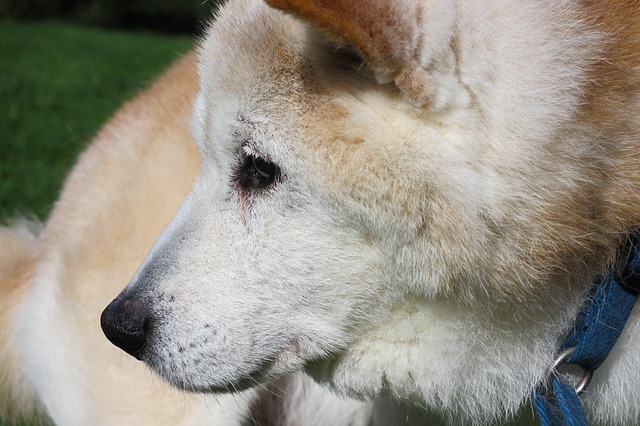Literally every individual is not conscious of what do frogs eat? This article circulates a vital information regarding frogs diet. Frogs are the most common groups of amphibians and they are widely distributed across the globe. These animals are not found in the cooler areas such as Polar Regions or oceanic islands. There is a significant difference in frogs feet that varies from species to species. The frogs living in wetter environments have webbed feet unlike others.
What Do Frogs Eat
- Frogs have teeth that are next to their upper jaw and are known as maxillary teeth. Frogs hold their food with the help of these teeth before swallowing it completely. However, these teeth are too weak to tear the food or chew it or prey animals.
- They have distinctive prey-catching ability in that they fling their sticky tongue towards a prey and latch it even while it’s moving.
- The tongue is affixed at the mouth and is free at the back. Nevertheless, not all frogs have tongues to seize their prey; they use their hands instead. One of the strange features of frogs is that their eyes support the food to be swallowed.
See also: Frog Facts For Kids
Anuras
- Frogs that belong to the Anura order are apt to adopt the sit-and-wait foraging strategy according to which they wait for the prey to come in a suitable range before finally swallowing it. Almost all anurans claim good vision which is essential in locating prey so that they may observe every single movement of their prey. They are also able to distinguish different colors.
- Bufo boreas, B. marinus, and Rana pipiens are some of the frogs which can locate prey by olfaction. Bufo however is a species which is known to prey by auditory detection. A few species such as Pipidae typically have a poor vision and they locate prey by olfaction. Besides, they can also observe minute movements of a prey by the sensitive lateral-line organs.
- Anuras are adept to capture prey with the tongue. There are glands in frog’s tongue that produce a sticky substance. Frogs do not chew the food instead they swallow the entire prey. Anurans consume a good many number of insects including spiders and other small invertebrates. Many anurans eat variety of prey depending on the size of its prey.
- Almost all frogs are known to feed on small prey such as ants including dendrobatids and many microhylids as well as termites (e.g., members of the leptodactylid genus Physalaemus and fossorial frogs of the genera Hemisus and Rhinophrynus).
- Large frogs such as African ranid (Pyxicephalus) and South American leptodactylid (Ceratophrys) are known to consume small vertebrates such as lizards, rodents, other frogs, birds, and snakes. All anurans however do not eat this way.
- The dendrobatids are diurnal species as they become active foragers all day long and feed on the ground. They consume small animal such as small beetles and ants. Some frogs feed on termites and ants underground.
- Pipid frogs are marine animals and they do not have tongue. They eat small prey by transporting food into the mouth with water currents which are produced by throat movement. The larger prey is swallowed by pushing it with their fingers.
New Zealand Frogs
- These frogs fancy eating small invertebrates which they capture by bites or lunges precisely because they do not have protrusible tongues.
- Archey’s frogs feed on small insects and other invertebrates.
- Hamilton’s frog likes to feed on terrestrial arthropods and other small insects.
Tailed Frogs
Tailed frogs eat aquatic insects including invertebrates along with terrestrial insects. They prey on tadpoles scrape algae and diatoms from rocks.
Painted Frogs
Painted frogs are known to feed on adult and larval insects. Their diet also includes weevils, grasshoppers, ants, flies, moths, moth larvae, spiders, snails, beetles, and isopods. They are almost entirely nocturnal.
African Clawed Frog
They have a wide range of food preference since they live in diverse aquatic habitats. The adult clawed frogs feed on insects and vertebrates such as birds, small mammals, fish, and anurans. They are often seen to jump out of water to capture flying insects.
They rarely prey on fish because the water in which they are found contains only a small population of fish. African clawed frogs will also consume rodents and small birds that fall into the water. They are scavengers. The clawed frogs are seldom found on land.
Parsley Frogs
Parsley frogs are active foragers at night. Much of their diet consists of invertebrates such as slugs, flies, crickets, and worms.
Scychelles Frogs
They are known to consume a wide range of small invertebrates as well as fruit flies, mosquitoes, forest floor insects, moths, and mites. Thomasset’s frog is seen to perch on rocks beside streams at night and prey on small flying insects.
Tusked Frogs
The male tusked frogs tend to rely on snails for their consumption. They rarely feed on arthropods. Females on the other hand consume more arthropods and fewer snails. Males typically spend a great deal of time in moist habitats where snails are abundant. Similarly females move on drier forest floor where they easily find arthropods.
Sandhill Frogs
Sandhill frogs are opportunistic feeders and the essential part of their diet is composed of arachnids, ants, spiders, true bugs, and beetles. They are nocturnal species.
Suriname Horned Frog
It is a sit-and-wait predator and will swallow anything that moves by it and is not too large to gulp. The horned frog preys on small arthropods, spiders, and ants but mostly they rely on snakes, lizards, mice, frogs, and large grasshoppers.
Puerto Rican coqui
They feed on vegetation at night and their diet consist of several insects, including roaches, crickets, snail, small frogs, and even spiders.
Poison Frogs
They consume very small arthropods with the size ranging from 0.03 to 0.07 in (0.8 to 1.7 mm) in length. Poison frogs supplement their diet with small flies, tiny spiders, mites, small beetles, springtails, and ants. Their diet consists of 50 – 73% of ants.
True Frogs
True frogs are sit-and-wait predators and they eat variety of different prey preferably invertebrates. The habitat type defines the prey type. Large frogs feed on small mammals, birds, other frogs, reptiles and even their own young Some (Hoplobatrachus) are carnivorous and may feed on heterospecific or conspecific tadpoles.
Shovel-nosed Frogs
They make fairly food good pets and in captivity they feed on earthworms. Shovel-nosed frogs consume nocturnal termites. They mostly come out after the rain. They typically prey earthworms by digging tunnels just below the surface.
African Treefrogs
Many treefrogs eat small creatures but they like to feed on insects the most. The two species in the Ethiopian genus Tornierella and the Cameroonese Leptopelis brevirostris eat snails. The East African Afrixalus fornasinii feeds on the eggs of Hyperolius and Chiromantis.
Narrow-mouthed Frogs
They often prey on ants but they also eat other tiny invertebrates. Larger frog species consume earthworms, lizards, and frogs.
What Do Baby Frogs Eat?
There are several stages of frog’s development and each individual stage exhibits unique diet patterns. Baby frogs which are also known as tadpoles are often fed with plants, algae, and fungi. These juveniles are also very fond of microscopic creatures in water. As they advance towards the maturity, they turn out to be carnivores.





Leave a Reply